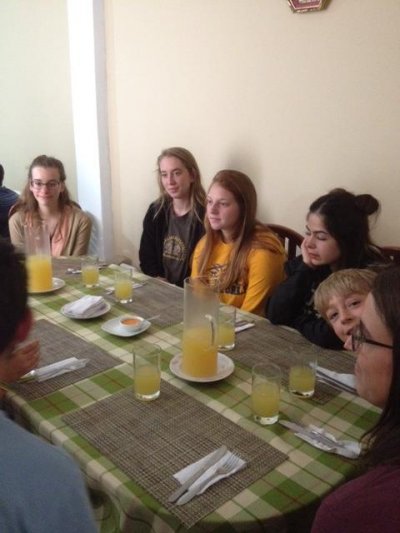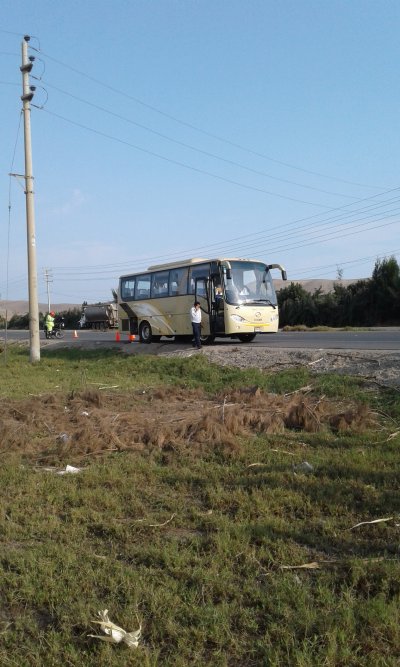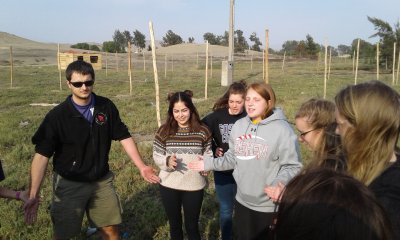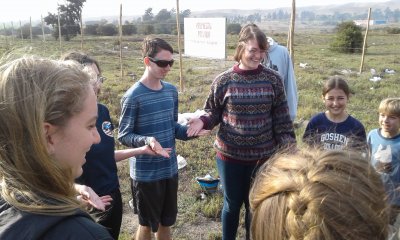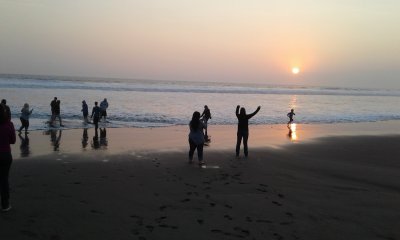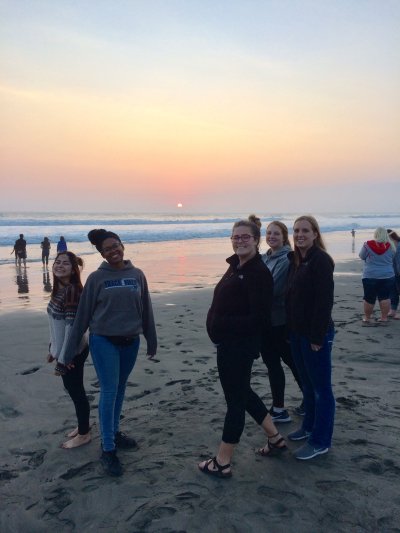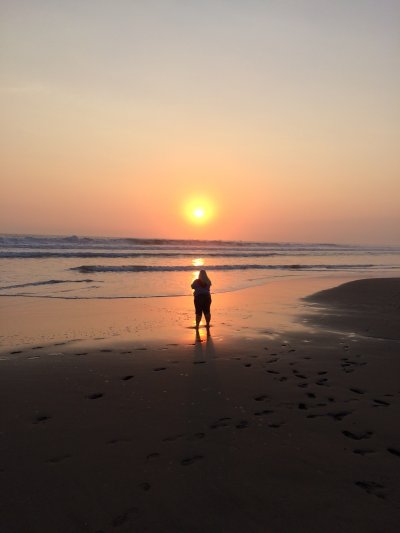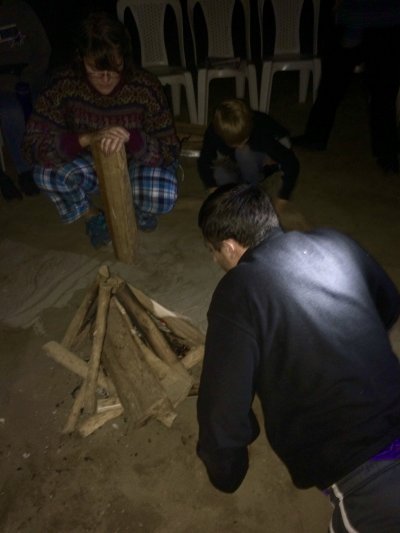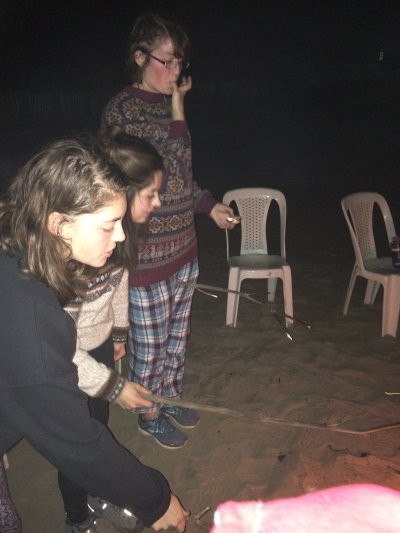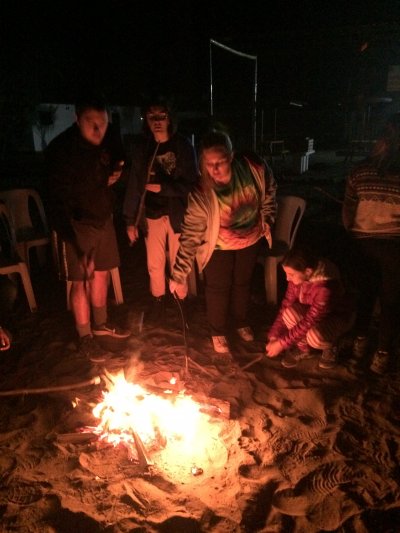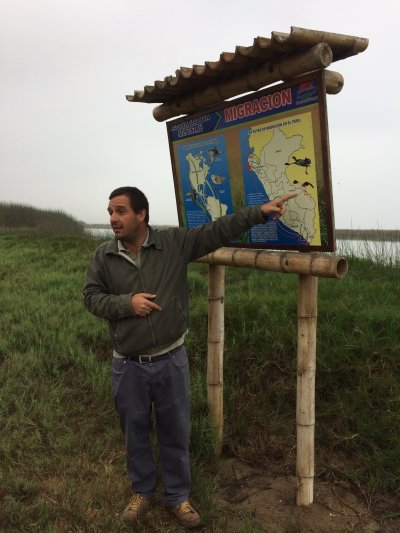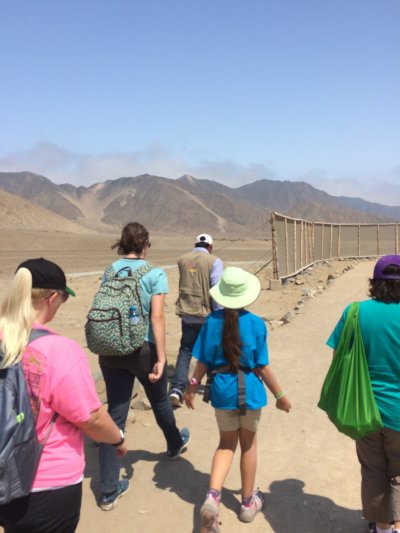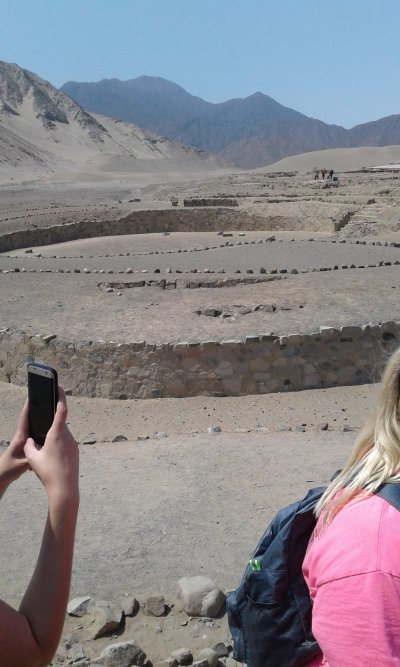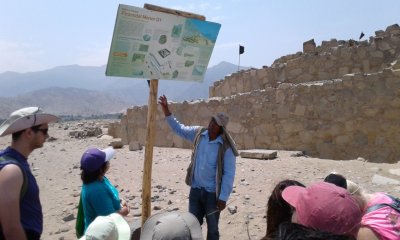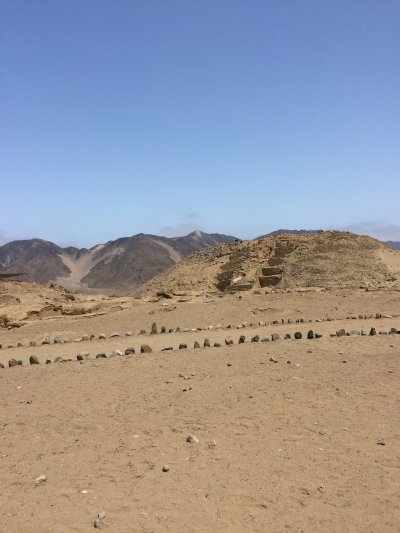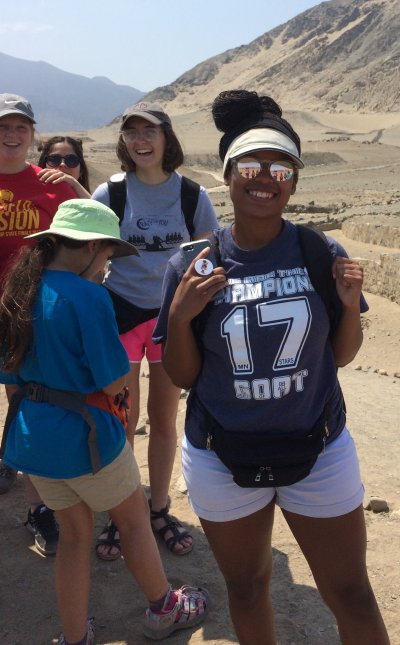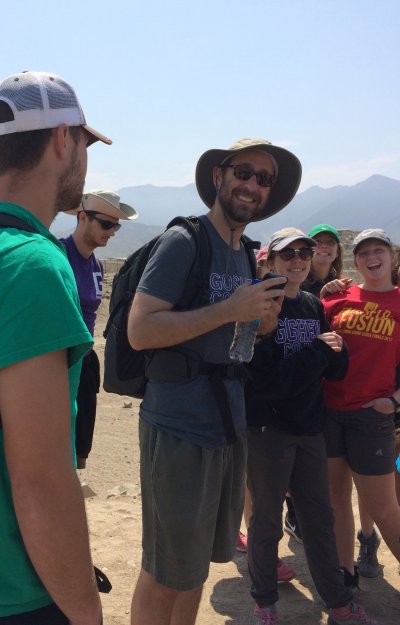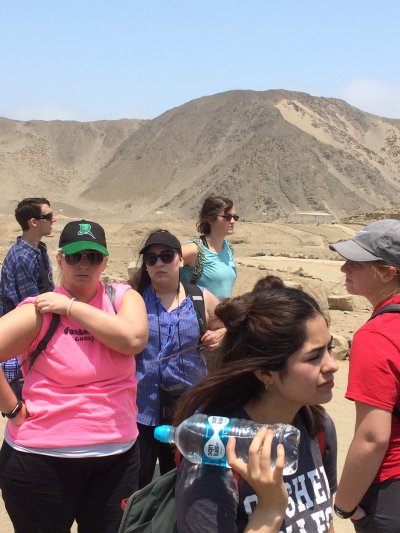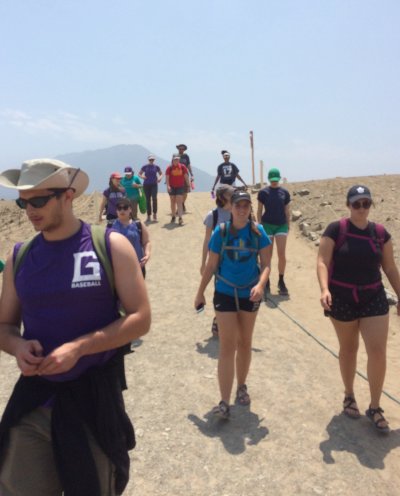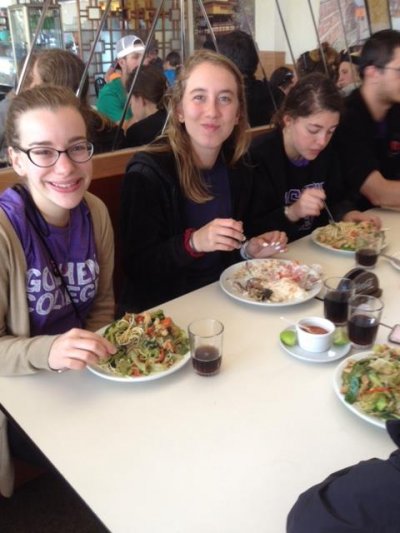First Excursion Outside the City Limits
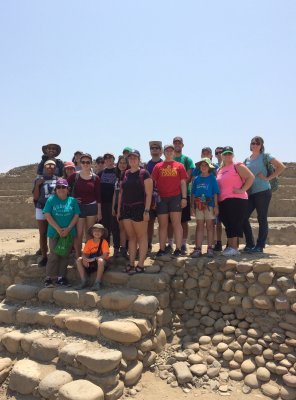
On Thursday and Friday, we had our first opportunity to leave the city of Lima. We boarded our bus for a 4-hour trip north on the Pan American highway to visit Albufera del Medio Mundo, a protected wetland, and the sacred city of Caral, an ancient archaeological site.
On our way out of the city, we passed miles and miles of pueblos jovenes (shanty towns) built onto the sandy hills, and then eventually miles and miles of bare sand dunes. Occasionally, we passed through lush, green agricultural areas where rivers coming down from the mountains allow for irrigation. We stopped in one of these areas, the town of Chancay, about half-way to our destination. We ate a delicious lunch of chicken, beans and rice prepared for us by Hortensia and Juan Carlos Dulanto, who have served as a host family for past GC students during the service portion of SST.
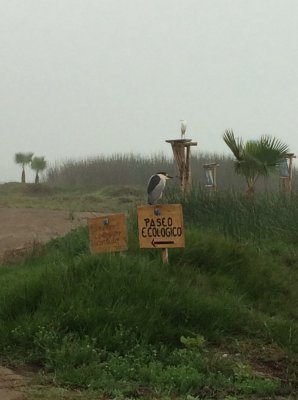
Though we had had a small setback in the form of a flat tire on our bus, we arrived at Albufera del Medio Mundo with enough time to head down to the ocean and frolic on the beach until the sunset. Our lodging for the night was a set of cottages beside the albufera, a lagoon that has a mix of both salty and fresh water, and is the central feature of this biodiverse wetland which hosts 8 different habitats. We had a picnic supper and heard a speech from Parker about the two most common types of trees in Peru — the palm tree and banana tree. Afterward, we built a fire and spent some time reflecting on our experiences thus far in Perú. We enjoyed looking at the “upside down” moon in the Southern hemisphere and shared times in our lives that we have watched the night sky. Afterward, we enjoyed some improvised s’mores.
On Friday, we got up early for a bird walk with Claudio Revegno, one of the resident environmentalists, and learned more about the local ecosystem. The albufera has 41 species of resident birds, and hosts 22 migratory birds, as well as 3 birds from the high Andes. We saw over 15 different types of birds, both large and small, on our walk along the lagoon.
Following our walk, we had a quick breakfast and were off to our next destination – the Sacred City of Caral. Caral is the oldest center of civilization in the Americas. Carbon dating of objects found at the site put its development sometime between 3000-1800 B.C. which means it was a thriving society at roughly the same time the Egyptian pyramids were being built. Caral is 14 miles inland from the coast and is situated on a desert terrace, looking over the green Supe River valley. This site has only recently begun to be studied in depth, so the area is fairly undeveloped and the natural area surrounding it is quite pristine. Six large pyramidal structures, large communal sites such as an amphitheater, and remnants of personal dwellings make up the site. The hike around the site afforded great views of the surrounding hills and green river valley, and it was nice to see the sun and be in a wide-open space after several weeks in Lima.
On the bus ride home, students had ample time to chat, process, and catch up on their sleep. It has been an exciting and full first two weeks.
